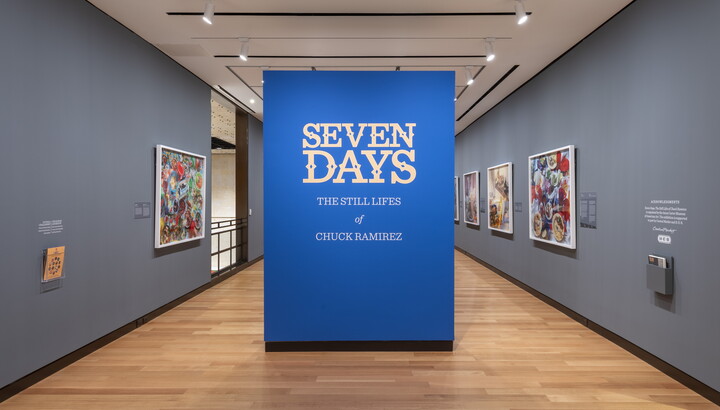The Carter Blog
Carter ARTicles
Making nature's colors
Mar 23, 2022
Sandy Rodriguez in Isolation features gorgeous paintings of Rodriguez’s time spent in residency at Joshua Tree during the early days of the pandemic. During her time in the desert, she collected botanical specimens and used them to produce the hand-processed inks and watercolors used in her work. We chatted with Rodriguez to find out what inspired her to make her own inks and watercolors.
Q: How did you become interested in making inks and paints from natural materials?
SR: I spent nearly 20 years as an educator and then librarian at the Getty Museum researching and teaching the methods and materials of painting in the European tradition, and where and how colors were introduced and distributed across a variety of artistic traditions. I studied painting manuals from many time periods that describe in detail the recipes and ratios for painting. In 2016, I left the Getty to work full-time as an artist and began doing field studies on local medicinal native plants. Around the same time, I took a trip to Oaxaca, Mexico, which is where cochineal or carminic red was processed and exported for thousands of years. I brought some cochineal home with me and, as I was painting a picture of 43 abducted college students from Ayotzinapa, Mexico, I realized that the material, the content, and the form could come together in a really powerful way to impact audiences.
Q: What is the easiest or most difficult color to make?
SR: I couldn’t say that one is more easy or difficult, they all are labor-intensive, satisfying, and healing. It’s so relaxing to process colors!
The most reactive and dramatic of the colors would be logwood. While logwood is primarily used for dyeing textiles, I like to create a watercolor from it. Logwood is the common name for Haematoxylum campechianum. In Spanish it’s called palo tinto meaning “wood that tints,” because when you take the exterior bark off of the tree and you get down to the center, or the heartwood, it’s a reddish-brown. But when you do a heat extraction, in PH neutral water, it yields a hot pink. Once it’s hot pink, you can manipulate it. If you crush iron tablets into it, it becomes black. If you add alum, which is used to prepare fibers to accept and hold dye, it turns from pink to dark purple. So it can shift black, honey-colored, pink, purple—depending on how you work with it.
Many water-soluble plant-based colorants fade over time. Knowing that, I started layering modern colorants with the organic colorants so that you still have the infusion of the organic color within the fibers of the paper, but the modern colorants provide more stability and permanence.
Q: The Florentine Codex is a big influence on your work. How did you first learn about it?
SR: I was digging around in the Getty Research Institute and discovered a book called Colors of the New World by Dr. Diana Magaloni, who is the foremost scholar on the Florentine Codex. In one of the chapters of her book, she describes the symbolic use of color and explains that this information is contained within a treatise on color within the Florentine Codex. The Codex itself is 12 books and is written in three languages: a visual language; Nahua—which I can’t read; and 16th century Spanish, which I do read. After years of borrowing copies and reading the digitized version, I got my own copy of the Codex and I continue to study it as well as the new scholarship that’s happening around it.
Q: Did you get most of your ink/paint recipes from the Florentine Codex?
SR: I use a lot of different sources to make my paints. Because I’ve had experience in the studio, am familiar with ratios from painting manuals from medieval to the early modern period, I know how to process paint according to a variety of traditions. For the details on colorants specific to the Americas, however, I consult with conservators, anthropologists, archaeobotanists, contemporary indigenous artists, and with a broad network of people who process natural colors.
Q: Were you able to follow the recipes exactly or did you need to improvise?
SR: There aren’t really any exact recipes. It would be so nice if there were! There’s much trial and error and trying to remember what I did which is why you have to keep a journal that explains one part this, one part that, it was done on a humid day or a very dry day, with tap water or still water. Colors can be shifted with the addition of acids or bases. Even the tools you use make a difference—metal, wood, marble—can all affect the results. You have to know the chemistry behind it.
For more information on Sandy Rodriguez or natural inks:






